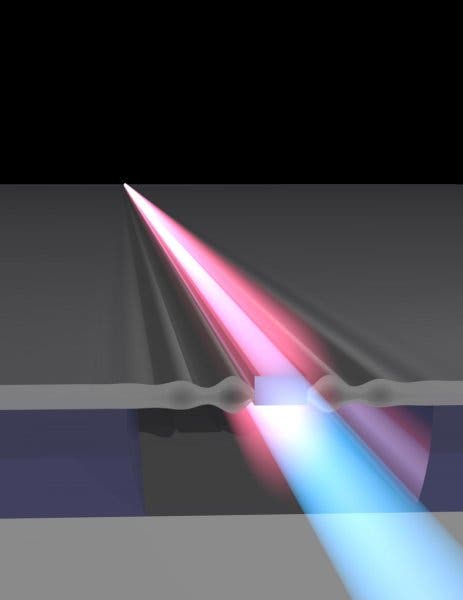A whole new world of signal processing may be just around the corner. Yale scientists have developed a method of boosting the intensity of light waves on a silicon microchip using only sound.

Image credit: Yale University
The paper, published in the journal Nature Photonics, describes a novel waveguide system that has the ability to control the interaction between sound and light waves. The system could form the foundation of a host of powerful new signal-processing technologies starting from the humble (and widely-used) silicon chip.
And this is one of the most exciting selling points of this technology: silicon chips are ubiquitous in today’s technology.
“Silicon is the basis for practically all microchip technologies,” said Rakich, assistant professor of applied physics and physics at Yale and lead author of the paper. “The ability to combine both light and sound in silicon permits us to control and process information in new ways that weren’t otherwise possible.”
“[The end result] is like giving a UPS driver an amphibious vehicle — you can find a much more efficient route for delivery when traveling by land or water.”
The advantages of integrating such a technology into a silicon chip were sought-after by numerous groups around the world, but with little success. Previous attempts just weren’t efficient enough for practical applications. The Yale group’s breakthrough came by using a new design that prevents light and sound from escaping the circuits.
“Figuring out how to shape this interaction without losing amplification was the real challenge,” said Eric Kittlaus, a graduate student in Rakich’s lab and the study’s first author. “With precise control over the light-sound interaction, we will be able to create devices with immediate practical uses, including new types of lasers.”
The system is part of a larger body of research the Rakich lab has conducted over the past five years, focused on designing new microchip technologies for light. Its commercial applications range over areas including communications and signal processing.
“We’re glad to help advance these new technologies, and are very excited to see what the future holds,” said Heedeuk Shin, a former member of the Rakich lab, now a professor at the Pohang University of Science and Technology in Korea and one of the study’s co-authors.






